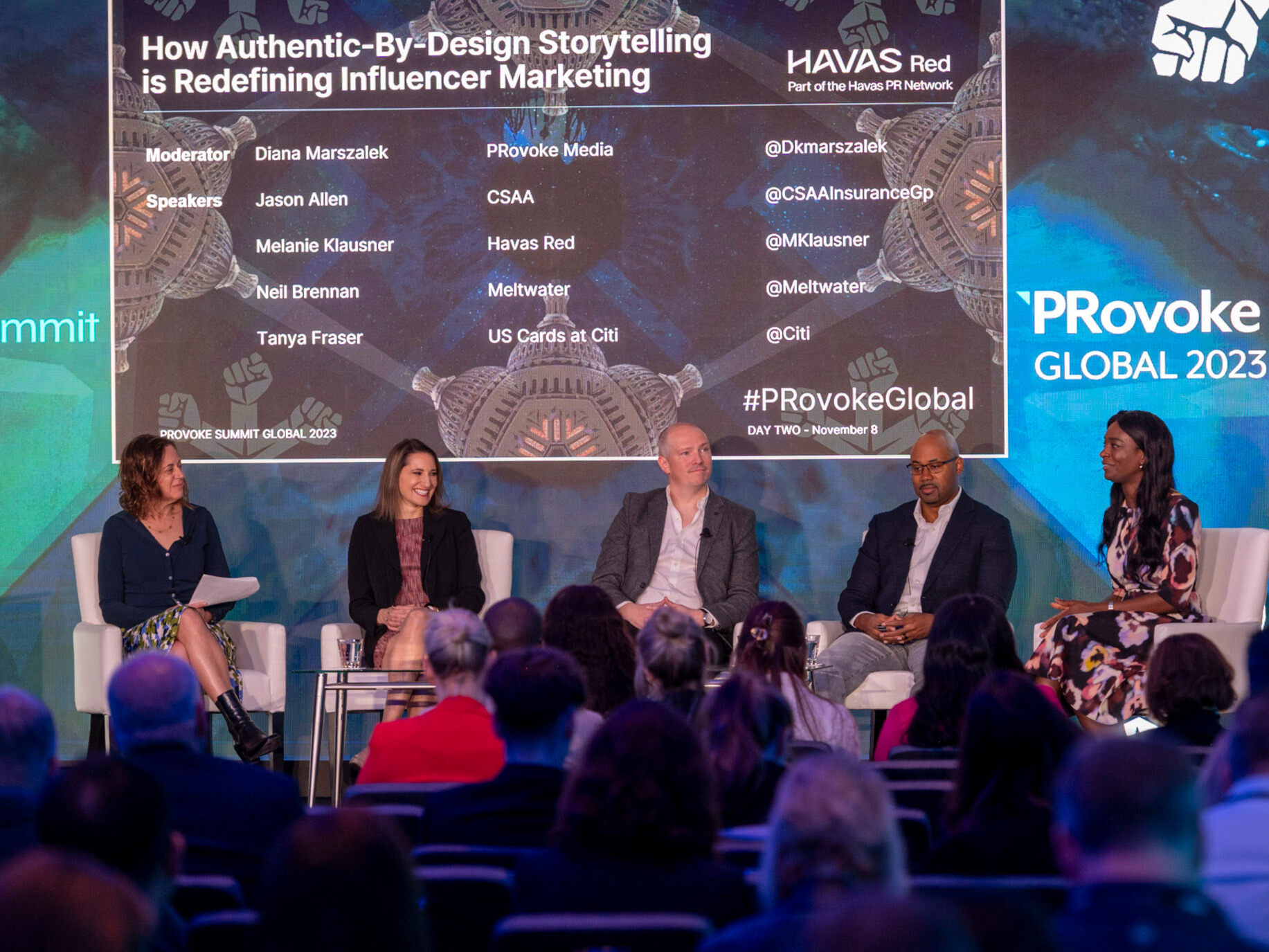Zhao Lu 09 Nov 2023 // 2:40PM GMT

Moderated by Provoke Media’s senior reporter Diana Marszalek and sponsored by public relations agency Havas Red, the panel featured insights from Melanie Klausner (executive VP at Havas Red), Neil Brennan (VP at online media monitoring company Meltwater), Jason Allen (social reputation consultant at CSAA Insurance Group), and Tanya Fraser
(SVP and head of US cards advertising at Citi).
Having embraced influencer marketing for nearly a decade, Klausner emphasized the importance of defining campaign purposes and carefully selecting influencers aligned with those goals. She shared a poignant example of a successful non-profit campaign that invited volunteers to share authentic stories, resulting in increased volunteerism and donations.
Brennan highlighted the shift towards appreciating the creativity of online creators and emphasized the value of integrating social content creation at the inception of campaign planning. Fraser echoed this sentiment, emphasizing the need to design content for influencers as complete individuals, tailoring it to their best-performing platforms.
CSAA Insurance Group, a AAA insurer, is a new player in the influencer marketing space. However, they have already achieved considerable success with influencers in their awareness campaigns, Allen shared.
One such campaign called “Boys No More” was particularly noteworthy. It featured pop culture icons like Joey Fatone and Nick Lachey singing about CSAA’s commitment to their customers. The CSAA team recognized the importance of influencers in amplifying cultural momentum through social media and thus collaborated with Christie Allen, a geriatric millennial singer, to create this campaign.
“She ended up being a key tool for us to help amplify that and make our campaign a part of the chatter,” Allen noted. “And made it feel authentic and real.”
However, working with influencers comes with challenges.
Brennan stressed the importance of aligning creator values and past content with brand goals. Recruiting existing customers is a great way to achieve success, according to Brennan, instead of seeking out new creators externally.
Fraser added that, especially in regulated industries like Citi, vetting and contracting processes can extend the cost and timeframe significantly.
According to Fraser, it’s a “joint storytelling process” to maintain a balance between authentic storytelling and quality control. The influencers are required to interact with the products and share their genuine experiences. However, Citi has a responsibility to ensure that the narratives comply with the legal and policy requirements.
And even when using brand ambassadors who are employees, as Allen mentioned, educating them on prioritized platforms and tools is crucial.
“[Employee-generated content] can get messy because people are their whole selves online and that’s not necessarily just their business persona,” Allen said, adding that they typically concentrate on LinkedIn and provide pre-written text for employees.
Klausner advised brands to discover their digital personality for unfiltered storytelling. She shared an example of reshaping an executive’s LinkedIn profile, incorporating his passion for tennis, which significantly enhanced his engagement and human connection.
“That’s something we try to do with all of our clients, shaping those conversations, so that it is authentic to the brand, to the employees, how you want to show up as an organization and live those purposes and values as a whole person.”
When discussing metrics for tracking campaign success, all speakers emphasized engagement, views, landing page visits, acquisitions, and followership. Fraser noted that engagement metrics should align with campaign objectives and platform nature.
Allen shared an innovative metric from the “Boys No More” campaign, where they analyzed positive comments from users with verified blue check marks to gauge content reach:
“Because the algorithm picks up that people who follow this person will [be more likely to] like this content as well, that can give you an understanding of how far-reaching your content is.”


































.jpg)

















